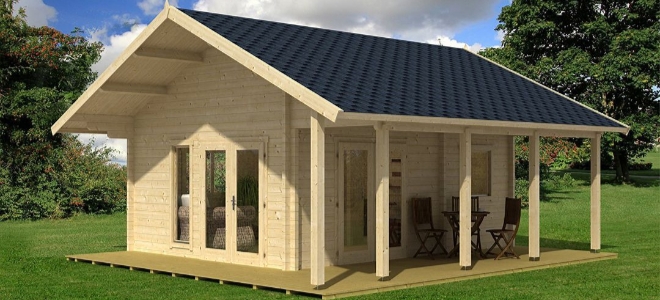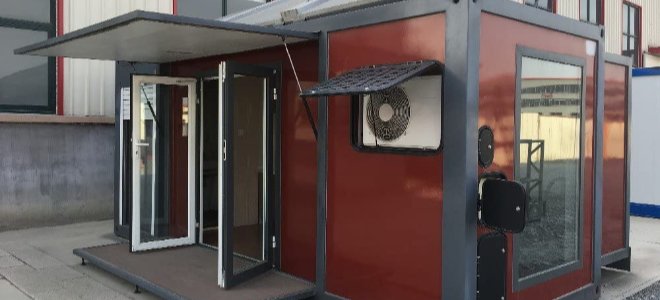
A survey report by the National Association of Home Builders suggests that over half of the American population would consider living in a house smaller than 600 square feet. Tiny homes are more popular than ever, and the sales giant Amazon has jumped on the trend with a range of house kits you can buy online.
What Are Amazon Tiny Homes?
Tiny houses made their debut on Amazon in 2017. In principle, tiny houses are supposed to be “fully-fledged dwelling units on a small scale.” They’re a product of the tiny house movement, which advocates for downsizing living spaces, simplifying life, and fundamentally living with less. Oftentimes, however, the “tiny house” definition has meant different things to different people.
Most of the “tiny homes” you will find on Amazon are usually not designed for full-time accommodation. Most of the homes are often advertised and sold as cabins rather than fully-fledged residences. As Do-It-Yourself (DIY) projects, most tiny homes only come with bare materials and few basic features. For instance, while they come pre-loaded with floorboards, they usually don’t have foundation material that ensures a home is stable and secure.
Further, they also lack the basic amenities necessary for full accommodation, such as plumbing, gas, and electricity. Many more “tiny homes” even lack the basic kitchen and bathroom setup upon delivery. Supplementing the tiny homes shells with these amenities to make them fully livable can quickly stack up costs.
In practice, the cumulative cost of converting an Amazon’s tiny home into a fully-fledged house might be as high as the cost of building any other ordinary house. Cognizant of these disparities, most of Amazon’s tiny homes are usually advertised as garden cottages, lakeside houses, or standalone retail shops rather than as fully-fledged residentials.

Advantages of Amazon Tiny Homes
Given their low budget, portability, and maintenance costs, tiny homes present significant advantages to owners;
Monetary Value
An average homeowner spends about 37% of their income on housing-related costs. Owning a tiny home is a sure way of salvaging yourself off these costs as tiny homes’ costs are much lower than ordinary houses. In addition, the ease of implementing cleaner solutions such as solar and natural lighting reduces these costs even further.
Convenient
Living in tiny homes reduces your housing costs, meaning you can take a day or two off work to travel the world and focus on what is essential for your personal development.
Social Connection
Tiny homes enable one to spend more time outdoors, interact with the community, assist each other when in need and create a sense of belongingness.
Environmental Consciousness
Tiny homes are the focal point in the broader system that addresses environmental concerns such as emissions reduction and sustainability.
Self-actualization
students are increasingly opting for affordable housing to help them focus on other more important concerns such as tuition loans clearance and personal growth.
Disadvantages of Amazon tiny Homes
While Amazon tiny homes have their advantages, they also have their disadvantages. The fact is that tiny homes are tiny in size. The small size does not work well on many occasions. It is particularly unrealistic to dwell in tiny homes for large families. Below are the main disadvantages of Amazon tiny homes.
Might Cause Future Regrets
A 2017 Trulia survey suggests that out of 42% of homeowners with regrets over their home sizes, only 9% wish they had chosen smaller sizes, the remaining 33% wish they opted for larger homes.
No Room for Expansion
Tiny homes can work for individuals, but soon as a family is brought into the picture, it becomes chaotic. Even just bringing along pets could crowd the place. This is something to be considered by anyone buying a tiny home.

The Cramped Space can Deteriorate Your Mental Well Being
Disrupted sleep and poor privacy have been found to cause stress and anxiety in overcrowded homes.
They Can Depreciate in Value
Like other personal property such as cars, tiny homes can depreciate over time, causing significant loss. Don’t invest in tiny homes hoping to cash out after a long time using the property.
They Are Not Ideal Permanent Living Spaces
Most tiny homeowners use them as vacation getaways rather than full residences. So their review might give prospective dwellers a false impression. While many people prefer living in minimal conditions, Amazon tiny homes tend to be just too tiny for permanent living.
Is it Cheaper to Build or Buy a Tiny House?
Whether building or buying, most tiny houses are usually far more affordable in their generic form compared to ordinary housing. Most of them are usually below $20,000, with costs dipping to as low as about $4,600. However, the cost will increase exponentially depending on size, complexity, design, and customization options. For instance, a 540-square-foot Allwood Avalon tiny house which can take up to 90 days to deliver, costs a whopping US$33,000, while a 113- square-foot tiny home would cost as low as $4,900
Conclusion
As an emerging trend, best practice recommends that you conduct more research and proceed with caution as you navigate options in your quest for the ideal tiny home. Consult with professionals in the field and government agencies in charge to ensure you have informed choices for an informed decision.
Source link : https://www.doityourself.com/stry/are-amazon-tiny-homes-worth-it












